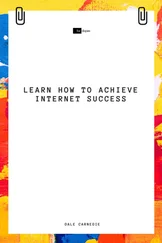Astrid Wood - How Cities Learn
Здесь есть возможность читать онлайн «Astrid Wood - How Cities Learn» — ознакомительный отрывок электронной книги совершенно бесплатно, а после прочтения отрывка купить полную версию. В некоторых случаях можно слушать аудио, скачать через торрент в формате fb2 и присутствует краткое содержание. Жанр: unrecognised, на английском языке. Описание произведения, (предисловие) а так же отзывы посетителей доступны на портале библиотеки ЛибКат.
- Название:How Cities Learn
- Автор:
- Жанр:
- Год:неизвестен
- ISBN:нет данных
- Рейтинг книги:4 / 5. Голосов: 1
-
Избранное:Добавить в избранное
- Отзывы:
-
Ваша оценка:
- 80
- 1
- 2
- 3
- 4
- 5
How Cities Learn: краткое содержание, описание и аннотация
Предлагаем к чтению аннотацию, описание, краткое содержание или предисловие (зависит от того, что написал сам автор книги «How Cities Learn»). Если вы не нашли необходимую информацию о книге — напишите в комментариях, мы постараемся отыскать её.
How Cities Learn — читать онлайн ознакомительный отрывок
Ниже представлен текст книги, разбитый по страницам. Система сохранения места последней прочитанной страницы, позволяет с удобством читать онлайн бесплатно книгу «How Cities Learn», без необходимости каждый раз заново искать на чём Вы остановились. Поставьте закладку, и сможете в любой момент перейти на страницу, на которой закончили чтение.
Интервал:
Закладка:
Chapter 6, “Repetitive processes of BRT”, situates BRT adoption within a longer history of South African transportation planning. It exposes previous involvements with BRT-like interventions that did not progress. This chapter contests the fast policy literature, which identifies the introduction of prefabricated best practice policies as part of the shortening of the policymaking cycles. Rather it suggests that there are multiple temporalities through which circulated policies emerge and remerge before adoption, and that often without these multiple attempts, policy circulation would not be effective. BRT learning is therefore gradual, repetitive and at times delayed.
Chapter 7, “Conclusion”, outlines the book’s main theoretical arguments, in particular answering how and why cities adopt circulated forms of knowledge. Here, I argue that policy mobilities is a process of learning and understanding, adoption and adaption, competition and collaboration, facilitated by local South African policy actors and their relations with urban elsewheres. In concluding, How Cities Learn explores the impact of BRT on the socio-spatial landscape of the South African city, and situates this study within the wider process of post-apartheid transformation.
Notes
1 1Interviews 69 and 62.
2 2Appendix A includes a list of interview respondents including their title, organizational affiliation, place and date of the interview. Appendix A is used throughout the book to link interview material with interviewees through a numerical system that lists the interviews chronologically. A number in brackets (e.g., [15]) refers to a particular interview and the reader should turn to Appendix A for supplemental information on that source.
3 3Racial categories are a legacy of apartheid in which all South Africans were defined according to these four classifications. These terminologies continue today. I have included the racial categories of my interview respondents to inform the reader of the extreme disproportionality between those planning for transport and those using the transport.
Chapter Two Geographies of Knowledge
Building an Analytic for Tracing
The widespread adoption of BRT in South Africa denotes a process of “policy mobilities” in which localities create, circulate and adopt global innovation (McCann 2011b; McCann and Ward 2011). How Cities Learn reveals that policy mobilities is not only the “purposeful, repetitive, programmable sequence of exchange and interaction between physically disjointed positions held by social actors in the economic, political, and symbolic structures of society” (Castells 1996: 442), but also a process of dialogue and debate which involves power and personalities. These practices, however, have proven difficult to research since the exchanges rarely lead directly to uptake. Previous studies have traced the movement of knowledge through various “coordination tools” (McFarlane 2011b: 364), which include consultancies (Rapoport and Hult 2017; Wood 2019b), conferences (Cook and Ward 2012; Temenos 2016), study tours (Montero 2016; Ward 2011; Wood 2014a), technology (Rapoport 2015), and workshops (Wood 2014b); and others have followed the transnational advocacy groups (Stone 2002) and learning organizations (Wood 2019c) that package, frame and legitimize global circulation (Theodore and Peck 2011). Scholars tend to conclude that learning emerges through various voices, interests and expectations, translating and coordinating a multitude of information, including existing knowledge, across asymmetrical power structures and creating possibilities from the impossible (McFarlane 2011a). How Cities Learn builds from this scholarship by outlining a conceptual and practical analysis of policy mobilities that attends to the plethora of ordinary practices – be it through engagements with fellow practitioners, with their toolbox of material solutions, or after a particular moment of discovery – that form the assemblages of learning.
It is along this line of inquiry that How Cities Learn builds upon and extends the thinking of urban scholars, first by bringing concerns of power into question, and second by problematizing notions of governance at-a-distance. Certainly policy mobilities arguments have provided evidence that power is now disseminated across a host of diverse agents and agencies. In this book, I ground policy mobilities within the adopting locality so as to suggest that power is always exercised in situ, although in the case of policy mobilities it often seems as if power is furthered by external authorities. Indeed, policy mobilities is a practice of both embracing extra-territorial thinking, but equally so a means through which local actors exploit international advocates and their policy models to justify preordained decisions, which might otherwise be resisted by local politics. Thus policy mobilities, though global in nature, is an inherently local process, one that is best exposed by scrutinizing the actors and their actions within the adopting locality, and then tracing back through their rationale for implementing a policy, product or practice also found elsewhere.
Accordingly, I employ the process of “tracing” to better understand policy mobilities (Wood 2020). This approach draws on Robinson’s three genetic and generative approaches to comparative urbanism: “composing” – that is examining the specific similarities and dissimilarities within a range of instances; “launching” – that is starting from anywhere and then putting the analysis to work anywhere; and “tracing” – that is following (i.e. the genetic component) and comparing (i.e. the generative component) the connections themselves. It involves outlining the connections and their influence on the comparable instances (McCann 2011b; Ward 2006), as well as comparing cities and their relationships themselves (Myers 2014; Söderström 2014). This approach allows us to trace historical events and consider their interrelated effects on the urban (Cook et al. 2014a; Wood 2015a); it enables us to see the urban realm as an assemblage of the here-and-there (McCann and Ward 2011); and it supports further consideration of the interrelatedness between cities within this stretched and extended moment of urbanization (Roy and Ong 2011). This means not only tracing that which brings cities into conversation with one another (i.e. the presence of comparativism) but also that which does not bring cities into conversation (i.e. the absence of comparativism), as well as the inherent subjectivity and slipperiness of those relations.
This chapter introduces the multidisciplinary approach of the policy mobilities literature and explores the research thematically, in the process also setting up a structure for the remainder of the book. First, I question the role of the innovation itself in attracting attention from the adopting communities – that is how and why are certain mobile ideas attractive to importing localities, and is there an agency inherent to certain policy models? Second, I refocus on the policy actors assembling, mobilizing and adopting innovation, to draw attention to their role both individually and within networks in the adoption of circulated forms of knowledge. Third, I concentrate on cities as institutions and specifically the way in which wider municipal-level decisions and relationships influence adoption procedures. Fourth, the argument turns towards temporality, to understand the way in which previous experience with similar forms of knowledge enables a more rapid adoption when the importing locality is ready. These discussions inform the key findings of this book.
Tracing through Policy Models
Policy mobilities scholarship studies how policies move. A geographically based understanding extends beyond merely classifying the thing moving and instead considers how policy models travel and what happens along the way (Peck and Theodore 2010a; McCann and Ward 2011). A brief review of the etymology of “policy model” presents it as a “complex social construction (no less ‘real’ for all that) which can only be understood by studying both its apparent ‘internal’ characteristics and simultaneously, its ‘external’ relations, which are co-constituted” (McCann and Ward 2013: 4). The term “model” is generally defined as “a way of doing something from which others learn” (McCann and Ward 2013: 3). McCann (2011a) uses the terminology “policies” to describe the formally drafted guidelines for governance, “policy models” for the statements of ideal policies and “policy knowledge” as the expertise about good policymaking and implementation. Policy mobilities theorists use a neo-Foucauldian lens to frame the role of governmental technologies and rationalities in shaping contemporary urban–global political economies. They emphasize the seemingly mundane techniques, discourses, representations, and practices through which policy models are made up. For the purposes of this book, a policy model is any form of circulated knowledge perceived to be affiliated with another city, individual or government that when introduced is assumed to be an improvement over its predecessor. Such a broad definition is illustrative of my overall approach, which emphasizes the relational co-production of the material and social aspects of local and global policymaking.
Читать дальшеИнтервал:
Закладка:
Похожие книги на «How Cities Learn»
Представляем Вашему вниманию похожие книги на «How Cities Learn» списком для выбора. Мы отобрали схожую по названию и смыслу литературу в надежде предоставить читателям больше вариантов отыскать новые, интересные, ещё непрочитанные произведения.
Обсуждение, отзывы о книге «How Cities Learn» и просто собственные мнения читателей. Оставьте ваши комментарии, напишите, что Вы думаете о произведении, его смысле или главных героях. Укажите что конкретно понравилось, а что нет, и почему Вы так считаете.












